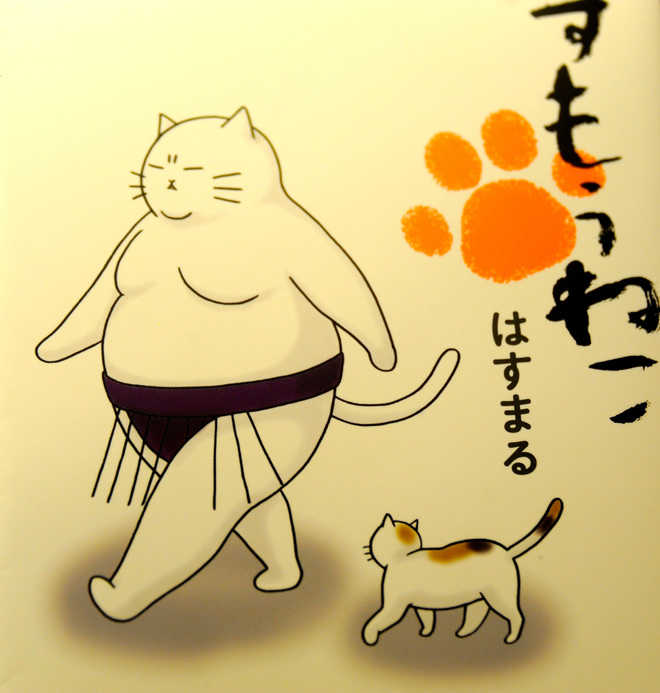
The Fight Club: Motifs of sumo wrestlers are common in popular culture.
Preeti Verma Lal
It is not often that one sees so many muscular men in one room. Men in tight top knots wearing heavily embroidered and tasseled aprons peeping out of brown frames. On the wall, their large handprints; behind glass panes samples of their gigantic shoe sizes. A purple silk kimono stands upright and two sculpted men try to push the other out of the mud ring. In Tokyo’s Sumo Museum, the history of Japan’s national sport comes alive through black and white sepia photographs of former sumo champions, hand prints, silk clothing, trophy replicas, paintings, and a traditional wooden red/black suitcase in which sumo wrestlers carry their personal belongings while travelling for wrestling bouts. The most fascinating is a lock of hair that is ceremonially snipped after a sumo wrestler gives up his career.
The thrill of sumo wrestling and watching comes alive even before one enters the one-roomed museum. The exterior walls are painted with two large murals depicting the wrestlers, referee and spectators watching a bout. The excitement is palpable in the line-drawn faces of the audience and the rippling biceps of the wrestlers.
The Sumo Museum was opened in 1954 together with the completion of Tokyo’s Kuramae Kokugikan Sumo Arena. In 1985, the museum was moved to its present location when tournament sumo returned to Ryogoku with the opening of the Ryogoku Kokugikan (sumo stadium). Today, the museum possesses 3,700 sumo nishiki-e (multi-coloured woodblock prints), 500 sumo dolls, banzuke (official ranking list), and kesho-mawashi (a silk belt with a heavily embroidered large apron worn by upper-ranked wrestlers). In the museum, which also serves as a research centre, the exhibits are changed six times a year.
The origin of the Japanese race depended on the outcome of a sumo bout in which god Takemikazuchi defeated the leader of rival tribes. Mythology aside, sumo originated as part of religious rituals performed in the precincts of shrines to appease the gods and pray for a bountiful harvest. In the eighth century, sumo was introduced into the ceremonies of the Imperial Court. Early sumo was a rough and tumble mix of boxing and wrestling. Thereafter, sumo techniques were used to hone the fighting skills of the samurai warriors, and later professional sumo groups were organised to entertain the expanding plebeian class.
In Tokyo, it is near-impossible to find a ticket for the annual sumo championship.


























